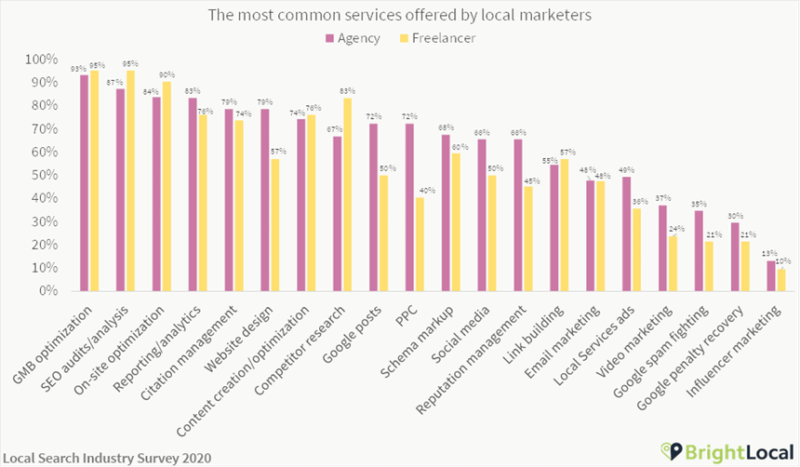Half of local SEOs have been working in the industry for at least a decade
The survey featured responses from 475 “local marketers,” including agencies, in-house marketers, freelancers and local businesses. The top for categories of survey respondents were as follows:
- Local/regional agency — 40%
- National/international agency – 20%
- Freelancer/marketing consultant –11%
- Local business –10%

Most local SEOs have been around for awhile. Half of those responding to the survey said they have been working in the industry for more than a decade and 11% have been working in local SEO for 20 years or more. Average annual revenues were $1.28 million (brands and SMBs excluded).
The vast majority (81%) of agencies and organizations in the survey had fewer than five SEO employees; 38% had just one. Most respondents (76%) had between 2 and 20 clients.
The survey found that 65% of local SEOs earned more than $60,000 and 29% were making more than $100,000. Only 4% were looking to move out of local, while others were interested in changing jobs within the industry or staying put in their current jobs, as indicated.

Monthly retailers the most common business model. SEOs are most likely to charge their clients on a monthly retainer basis (65%); a minority charged on a project or hourly/daily basis. The most common monthly retainer range was between $100 to $500, according to the survey. However, the size of the client/customer dramatically impacted monthly charges.
The most common services (chart above) offered by local SEO professionals are: GMB optimization, SEO audits, on-site optimization, analytics, citation management, web design and content creation/optimization. And how do local SEOs stay on top of new developments? Industry blogs were the most common answer according to the survey.

Why we care. While it’s not clear whether the survey is representative of the industry as a whole, it’s probably directionally accurate and offers some good benchmarks for local SEO professionals. Local SEO is a critical if not entirely understood sub-discipline of SEO, which has become increasingly important as Google has placed more emphasis on localized and proximity-based mobile search results. Indeed, a 2019 study by Moz found that 73% of 1.2 million SERPs crawled contained some localized feature.




